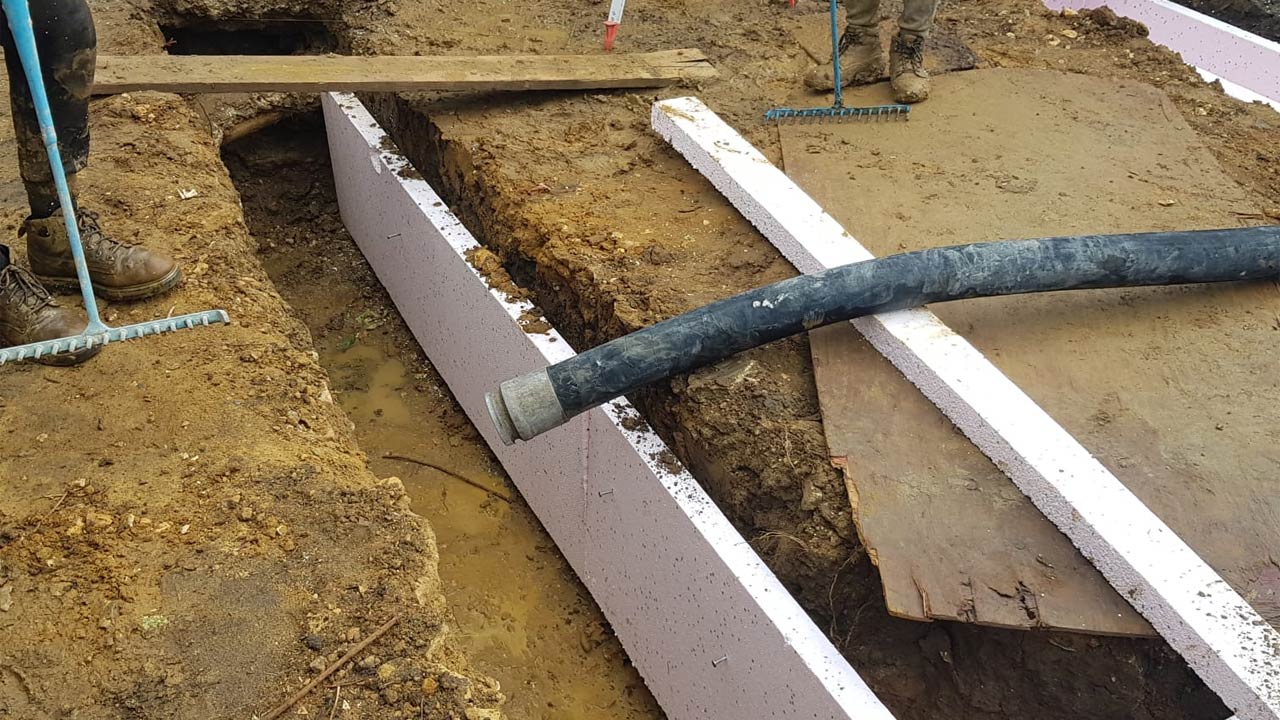A Guide On How To Lay A Concrete Foundation
If you’re preparing concrete foundations for your next project and are in the Surrey, Berkshire, or Middlesex areas, contact 365 Concrete. We have been the leading supplier of concrete for foundations in our local area for over 40 years. We only use the highest grade materials available, locally sourced and eco friendly.
Concrete foundations are crucial for any construction project as they support the entire structure of a home or building. An improperly built foundation can lead to significant issues such as cracks and structural damage. This guide walks you through the entire process of laying a concrete foundation, from site preparation to the final pour, ensuring a robust and durable base for your home.
Need High-Quality Concrete for Your Foundation Project?
Call 365 Concrete at 0208 751 0101 for a quote or use our online booking form. We cover Surrey, Berkshire, Middlesex, and Greater London.
What is a Concrete Foundation?
A concrete foundation is a key structural component that supports the weight of a building and transfers loads into the ground below. It forms the base that bears the weight of walls, floors, roof, utilities, and occupants. Foundations are essential for providing stability by evenly distributing structural loads into the underlying soil, preventing uneven settlement, and avoiding major cracks and damage.
Types of Concrete Foundations
Shallow Foundations: Suitable for single-family homes and low-rise buildings, extending down around 1.5 meters or less. Types include spread footings, mat slabs, and floating slabs.
Deep Foundations: Required for multi-storied buildings or homes on unstable soils. These extend beyond 1.5 meters into deeper soil or bedrock. Common systems include piles, piers, and caissons.
Required Tools & Materials for Concrete Foundation Work
To start your house foundation project, gather these essential tools and materials:
- Shovel for digging
- Pickaxe for tough terrain
- Trowel for concrete work
- Spirit level for precision
- Measuring tapes, string, and pegs for markings
- Wheelbarrow for transport
- Wooden planks for formwork
- Reinforcement steel (rebar) for added strength
- Concrete blocks for retaining walls
- Gravel for drainage
Concrete Foundation Construction Steps
If you’re wondering how to build a concrete foundation step by step, here’s a detailed roadmap:
Site Selection
Choose a site with stable, compacted soil that has good load-bearing capacity. Avoid loose fill or sandy soils. Ensure the site is free from flooding or high water tables. Survey the site for underground cables, pipes, or large tree roots that could obstruct excavation and foundation work.
Excavation
Mark out the foundation layout using string lines, pegs, and spray paint. Excavate the foundation trenches and footings according to your plan. The depth of excavation will depend on soil type and building load. Ensure proper slope and drainage and compact the soil thoroughly to prevent future settling.
Anti-Termite Treatment
Apply a chemical anti-termite treatment to the sides and bottom of the foundation trenches before pouring concrete. This creates a barrier to repel and eliminate termites. Choose a termiticide based on soil type and groundwater presence.
Compaction of Excavated Soil
Compact the excavated soil using a hand tamper or mechanical plate compactor. This step increases soil density and load-bearing capacity. Perform multiple passes with the compactor while the soil is moist.
Wooden Formwork
Erect wooden planks or plywood along the foundation trenches to contain the concrete. Ensure formwork is properly braced and aligned. Apply a release agent to prevent sticking.
Reinforcement Steel (Rebar) Work
Install steel rebar to enhance the strength and durability of the concrete foundation walls and footings. Consult a structural engineer for the rebar design and layout. Place rebars as per design and use bar chairs to maintain proper spacing and concrete cover.
Pouring Concrete into the Footing
Prepare a high-quality concrete mix with the recommended water-cement ratio. Pour concrete in continuous lifts of 18-24 inches into the foundation trenches. Use a tamping rod to consolidate the concrete and remove air voids. Level and smooth the surface with a trowel. Cure the concrete for at least 7 days by applying water.
What Makes a Good Concrete Foundation?
A good concrete foundation should have the following qualities:
- Transfers structural loads evenly into the ground
- Prevents cracks and settlement of the building
- Provides a strong, stable base for the superstructure
- Withstands the effects of ground movement
- Made of high-quality concrete and proper rebar reinforcement
- Extends below the frost line to prevent damage from freezing
For expert advice and high-quality concrete for your foundation project, contact 365 Concrete.
